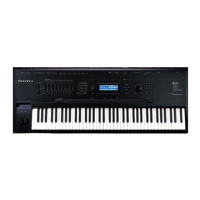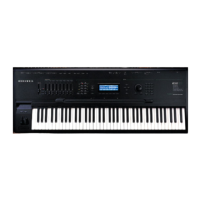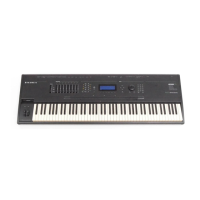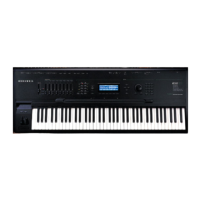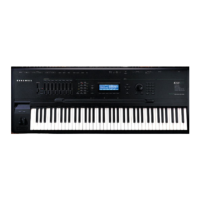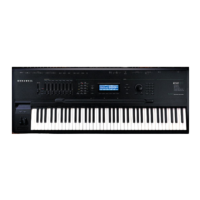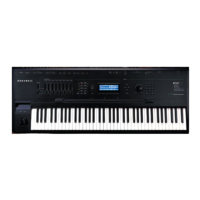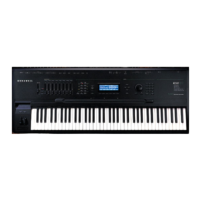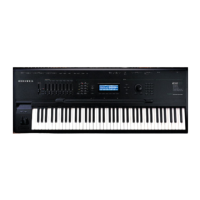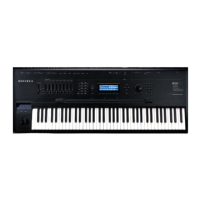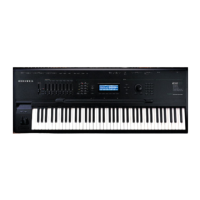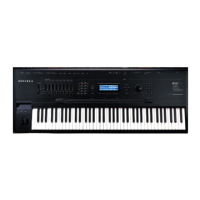Sampling and Sample Editing
Sampling the K2500’s Output
15-8
Sampling the K2500’s Output
You can sample the K2500’s own sounds when in Analog sampling mode. To do so, set the Src
parameter on the Sample mode page to a value of Int. Then, just press the
Record
soft button
and start playing.
The K2500’s "sample-while-play" capabilities offer a number of useful possibilities. It allows
you, for example, to create composite sounds made up of several K2500 sounds or even
sequences. This can help you make efficient use of the K2500’s polyphony. By building
composite sounds from other composite sounds, you could actually cause a frighteningly large
number of K2500 sounds to become a single sample. Assuming that your imagination isn’t
limited, your only constraint would be the amount of sample RAM installed in your machine.
Using the Sampler to Create Overdubs
One very exciting way that "sample-while-play" increases the power of your K2500 is by giving
you the capability to add overdubs to a sequence you’ve created with K2500 Song mode. The
procedure is a little tricky, so follow the steps below carefully. Also, remember when using a
microphone that you’ll need to boost the signal a bit before plugging into the K2500. The line
output of a high-quality mixer will give you a properly pre-amped signal.
Here’s how to do it:
1. Create a sequence in Song mode and leave at least one track free for your overdub.
For this example, we’ll use track 5 for the overdub track.
2. Find the lowest unused program number; let’s say "213".
3. Now press the Song button to enter Song mode.
Make sure that the current song is the correct sequence.
4. Set the track you’ve allocated for the overdub to Record mode. Press the Record button;
the "Rec Ready" indicator will flash on the top line of the screen, as shown below. Then
set this track’s program to be the lowest unused program number (as determined
above). For this example, it’s "213".
You’ll have to use the numeric keypad to enter the program number.
5. Press the Stop button.
6. Now edit the overdub track.
Make sure that the program parameter is not highlighted when you press the Edit button.
Otherwise you will enter the Program editor.
7. Press the STEP soft button to enter the Step editor.
SongMode:MAIN||Used:||0%|||||REC|READY||
CurSong:202*NewSong||||||||||Tempo:120||
RecTrk|:5||||Vol:127|Pan:64||Mode|:Merge
Program:213|Not|Found||||||||Locat:||1:1
||||||||[|[|[|[|||||||||||||||||||||||||
Track||:P|P|P|P|R|-|-|-|-|-|-|-|-|-|-|-|
Channel:1|2|3|4|5|6|7|8|9|10111213141516
Record||Play|||Stop||Erase||MISC||MIXER|
Record track is set to track 1
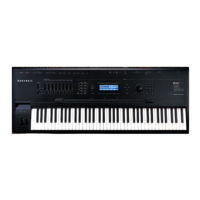
